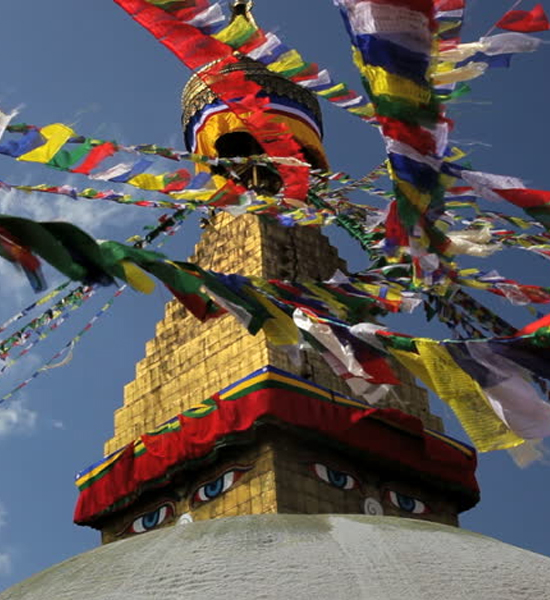
Situated in South Asia, Nepal is bordered by China in the north and India in the east, west and south. The country is roughly rectangular in shape, with a total land area of 147,181 square kilometers, stretching 885 km from east to west and between 145 km and 241 km from north to south, with a mean width of 193 km.
Topographically, the country can be divided into three distinct regions from north to south: the mountainous region, the hilly region and the flat plains, known as the Terai. Lying at an altitude ranging from 4,877 to 8,848 metres above sea level (masl), the mountainous region includes the Himalayas, the world’s highest mountain chain.
Nepal Himalayas comprises nine of the world’s highest peaks, including the highest, Mount Everest. The hilly region lies in the middle of the country, with altitude varying between 610 and 4,877 masl. Kathmandu Valley, where the country’s capital, Kathmandu, is situated, and many other scenic valleys, basins and pockets are located in this region. The Terai, which is an extension of the Gangetic plains of India, forms a low flatland along the southern border. It comprises most of the fertile land and forest areas of the country, and rich and big river basins.
Constitutionally Nepalese foreign policy is guided by “the principles of the United Nations Charter, nonalignment, Panchasheel (five principles of peaceful coexistence), international law and the value of world peace.” The fundamental objective of the foreign policy is to enhance the dignity of Nepal in the international arena by maintaining the sovereignty, integrity and independence of the country. Before 1951, Nepal’s foreign relation was limited with four countries; namely – India, United Kingdom, USA and France.
After membership of the United Nations in 1955, extension of diplomatic relations with various countries of the world increased considerably, with the diplomatic relationship to 118 countries around the world up to 2010. Membership and active participation on regional and international forums and organizations such as SAARC, BIMSTEC, WTO, World Bank, Asian Development Bank and UN Agencies is making Nepalese foreign relation effective and broad.
